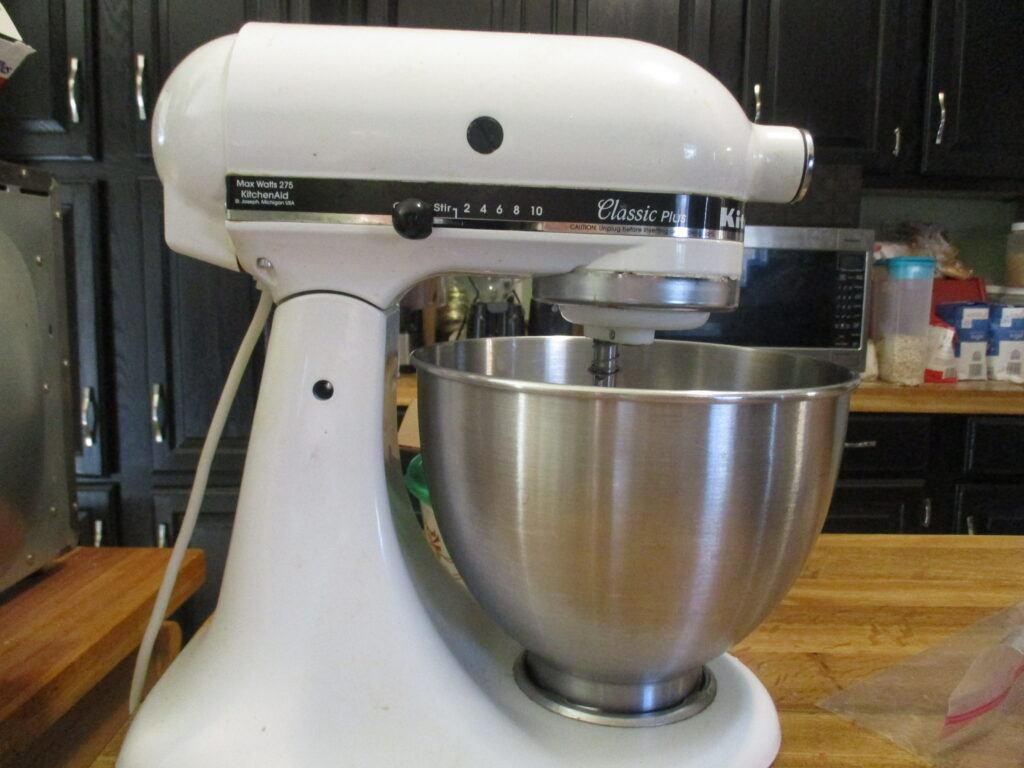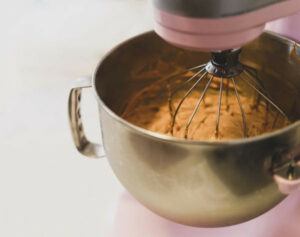Why does my stand mixer jump? I’m not surprised by this question. It happened to me. Not only did my stand mixer jump, but it also jumped and danced across my countertop right onto the floor. Good thing it is a very well-made machine because, believe it or not, it didn’t hurt it. Because I’m still using the same machine. Thank goodness is all I can say. Let’s see why this happens.
Why Does My Stand Mixer Jump?
There are 3 things to consider when your stand mixer begins to jump around on your countertop. The mixture in your machine is too heavy or dense, causing the machine to work a little harder. Your countertop surface is slippery, and you may need to check to make sure that all the parts of the stand mixer are working properly, such as the beater attachment position.
Mixture Is Too Heavy Or Dense

A heavy and dense mixture can cause your stand mixer to jump around. The stand mixer needs extra power to mix those ingredients. Stop your stand mixer and redistribute the ingredients. This may help.
Kneading bread dough in your stand mixer is notorious for causing your stand mixer to jump all over the place.
Also, thick cookie dough being mixed in your stand mixer will cause it to jump. No need to be alarmed. Just stop the mixer for a minute or two and then continue.
You may also need to lower the speed of the stand mixer.
Surface Too Slippery

Your countertop may be the culprit. Most countertop surfaces are made for easy cleaning and will cause your stand mixer to jump and slide all over the surface, especially when on a higher setting during beating.
The top 3 countertop surface choices for home cooks are Granite, Quartz, and Soapstone. Let’s take a closer look.
Granite: Granite is a hard, natural surface that does not scratch under normal use. It is heat-resistant. When sealed, which is recommended, food stays on the surface until you wipe it off. And is easy to clean.
Quartz: Quartz is a durable alternative to granite. It does not scratch, chip, or stain. Does not need to be sealed. It is largely heat resistant, but very high temperatures can burn the countertop, and this is not easy to repair.
Soapstone: Soapstone is not porous like granite. Completely resistant to bacteria, making it the most sanitary countertop. Natural heat conductor. It is, however, softer than granite and quartz and prone to scratches and nicks during use. These are thankfully easy to fix or remove. Lighter scratches can often be wiped away with a wet cloth. Deeper scratches with steel wool and a little mineral oil.
Whether you have granite, quartz, soapstone, or another type of countertop, a great option would be to use a non-slid mat under your stand mixer. This will help with all that dancing and jumping.
Are All Parts Of The Stand Mixer In Working Order?

Is your beater attachment in the correct position? If not in the correct position, this can lead to the stand mixer shaking and jumping. You can check the position by doing what is called the dime test. This test only works with a metal bowl, and you need to use the paddle attachment.
Place a dime in the middle of your bowl and lower your tilt head arm down. Turn the speed to 1. If the paddle pushes the dime all around the bottom of the bowl, then the position is too low.
If the dime doesn’t move at all, then the position is too high, but if the dime moves just a quarter to half an inch on each turn of the paddle, the position is just right.
A loose hinge pin can also cause your stand mixer to shake or jump. Watch the video below on how to tighten the hinge pin.
Do you use your stand mixer frequently? The wear and tear of frequent use can cause the beater position or the loosening of the hinge pin. Before each use, it is a good idea to check these 2 things.
The proper care of your stand mixer will help with keeping it in tip-top shape. Always wipe down your stand mixer after every use with a wet soapy cloth. Then rinse and dry thoroughly.
Store your stand mixer in the upright position. Never on its side.
If you can keep it on your counter, that would be great. Moving it from place to place ensures the possibility of dropping it due to its heaviness.
Final Thoughts
If your stand mixer is jumping all over the place, start by checking that the mixture is not too heavy and dense. If so, remember to rearrange the ingredients or just maybe stop the stand mixer for a minute or two.
Also, you may need a non-slid mat to place under your stand mixer due to the countertop being too slick.
Check to make sure all the parts are in working order, such as the hinge pin, the beater attachment placement, or the misaligned tilt-head.
Take good care of your stand mixer, and it will reward you with many years of use.
I hope you found this article helpful and that you can avoid your stand mixer jumping in the future.
Please leave me a comment below with your thoughts. I would love to hear from you.
Keep On Baking!
Taianne
Share The Love

I’m Taianne, the owner and operator behind We Are Baking. Baking my first cake at age 11 hooked me on creating sweet treats. Though my interest faded during childhood, it was rekindled when I married my apple pie-loving husband. I love trying new recipes, tweaking classics, and helping others learn the science and art of baking. I started We Are Baking to share tips, tricks, and favorite recipes I’ve discovered over the years. When not in the kitchen, I enjoy spending time with family and friends. My goal is to inspire others to embrace their creativity through baking. Feel free to contact me with any questions!
Taianne@wearebaking.com

